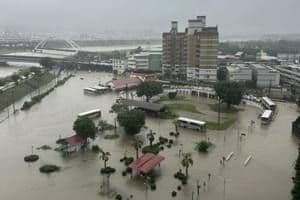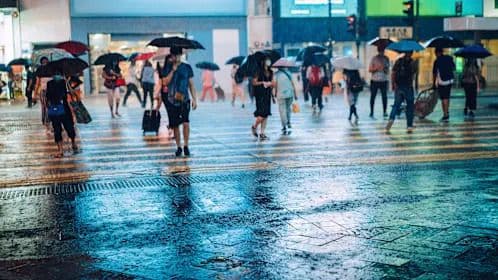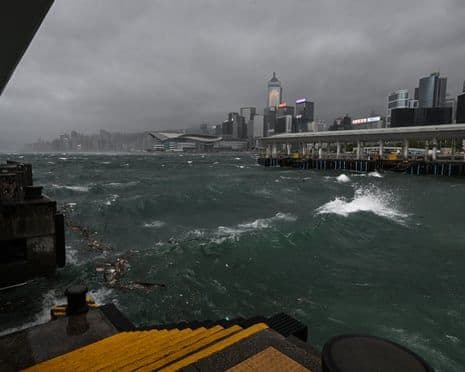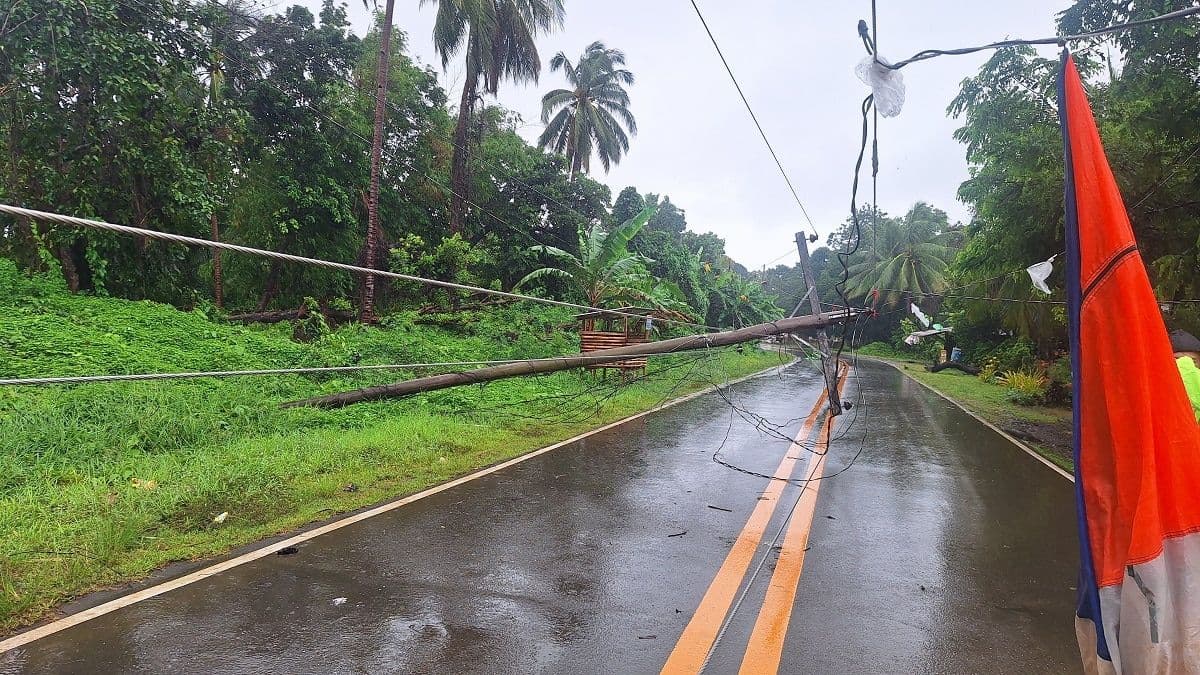The Unfolding Map: How Taiwan Adapts to Constant Flood Alerts
Explore how Taiwan grapples with relentless Level 1 flood alerts. This deep dive uncovers unseen impacts, local resilience, and long-term adaptation strategies for a changing climate.

The Red Flags: Understanding Taiwan's Current Flood Landscape
Taiwan finds itself in a precarious dance with its climate, a reality acutely underlined by the recurring "Level One Flood Alerts" (淹水一級警戒). These red flags, issued by the , signify imminent or ongoing inundation in low-lying villages and roads, urging immediate public vigilance and evacuation. The current deluge, primarily driven by a potent southwest monsoon and the periphery of a recent typhoon, has painted a grim picture across central and southern . , for instance, bore the brunt with over 440mm of rainfall in 24 hours, overwhelming local drainage systems. Further south, experienced devastating floods up to 70cm deep, submerging farmlands, roads, and homes. This isn't just about heavy rain; it's about the sheer volume and intensity pushing infrastructure to its breaking point. Major disruptions include the temporary adjustment of production lines at advanced packaging plant in Chiayi due to severe flooding, and the closure of numerous convenience stores, signaling a halt in everyday life. With over 3,700 preventative evacuations in vulnerable areas of , and visibility plunging on highways, these alerts are a stark reminder of the immediate, tangible threats posed by Taiwan's evolving weather patterns. The warns of continued heavy rainfall for days, particularly in the south, before any significant relief.

Beyond the Headlines: The Hidden Costs of Relentless Deluges
While headlines often focus on immediate rainfall totals and evacuation figures, the true toll of Taiwan's incessant Level One flood alerts extends far deeper, permeating the nation's economic fabric and societal well-being. Consider the economic ripple effects: the temporary adjustments in production at a high-tech titan like Chiayi AP7 plant, even if short-lived, underscore the vulnerability of critical industries to climate events. Beyond the tech giants, countless small and medium-sized businesses, like the convenience stores forced to close their doors in , face direct revenue losses and property damage, often without the same financial buffer. Agricultural heartlands in , where floodwaters reached 70cm, see entire harvests wiped out, impacting farmers' livelihoods and national food supply chains. But the costs aren't merely financial. Each deluge demands immense resources for rescue and relief, stretching emergency services thin. Communities face the exhausting cycle of clean-up and recovery, a process that can wear down even the most resilient spirits. The repeated disruption to daily life – school closures, hazardous commutes, power outages affecting some 9,000 households in coastal – creates a pervasive sense of uncertainty and stress. As an economic official noted, "rainfall day after day, wave after wave" means a continuous state of alert and a cumulative burden, creating hidden costs that far outweigh the visible damage reports.
Living on the Edge: Navigating Life Under Level One Warnings
For residents in Taiwan's flood-prone regions, living under Level One flood warnings isn't just about checking weather apps; it's a profound shift in daily existence, a constant negotiation with an unpredictable environment. Imagine the sheer anxiety as national alerts blare, signaling that heavy rains are not just coming, but are already here, turning familiar streets into treacherous waterways. Communities in , where thousands are preventatively evacuated, embody the difficult choices forced upon families – leave everything behind or risk being stranded. The practical challenges are immense and deeply personal. Homes become waterlogged, roads impassable, and basic services, like the temporarily closed convenience stores, disappear. One poignant observation from a resident whose roof was damaged by a previous typhoon and covered with a makeshift tarp, now a "water bomb" above their head, sums it up: "Our furniture was already ruined; there's nothing left to break." This isn't hyperbole; it's the raw exhaustion and resignation of those repeatedly battered by nature. The need to carry umbrellas, monitor real-time road conditions, and prepare for potential landslides or mudslides becomes a default setting. It's a life lived on the edge, where every darkening cloud brings with it a fresh wave of apprehension and the immediate need to adapt, or evacuate, at a moment's notice.
Building Back Stronger: Taiwan's Long Road to Flood Resilience
Amidst the relentless downpours and the immediate challenges, Taiwan is not merely reacting to floods; it is actively charting a long and arduous course towards greater resilience. The , through agencies like the , robustly defends its flood control efforts, asserting that significant investments, particularly through the initiated in 2017, are yielding tangible results. They point to a quantifiable reduction in flooded areas and a quicker recession of floodwaters, even in the face of record-breaking rainfall events that exceed historical protection standards. For instance, areas like and experienced rainfall far surpassing their 10-year drainage capacity, yet the impact was mitigated, indicating the effectiveness of ongoing projects. This isn't to say the problem is solved; far from it. Economic Vice Minister ’s stern directive for various agencies – from water and energy to industrial parks and utilities – to maintain "heightened vigilance" due to continuous rainfall underscores the persistent threat. However, it also highlights a coordinated, multi-agency approach to disaster preparedness and response. Taiwan’s strategy involves not just upgrading drainage systems and constructing protective barriers, but also enhancing early warning systems and fostering community-level preparedness. The road to full resilience is undoubtedly long, demanding sustained investment, innovative solutions, and continuous adaptation to a climate that shows no signs of easing its pressure. It's a testament to a nation committed to safeguarding its people and economy against nature's increasing fury.
Related Articles

Taichung's Unexpected Fountains: A City's Reckoning with Rising Waters

Taichung's Unexpected Fountains: A City's Reckoning with Rising Waters

Beyond the Deluge: Navigating the New Normal of Weekly Weather

Beyond the Deluge: Navigating the New Normal of Weekly Weather

The Human Equation of Extreme Weather: Adapting to Nature's Shifting Moods

The Human Equation of Extreme Weather: Adapting to Nature's Shifting Moods

Weathering the Storm: Unpacking Resilience in a Deluge-Prone Nation
